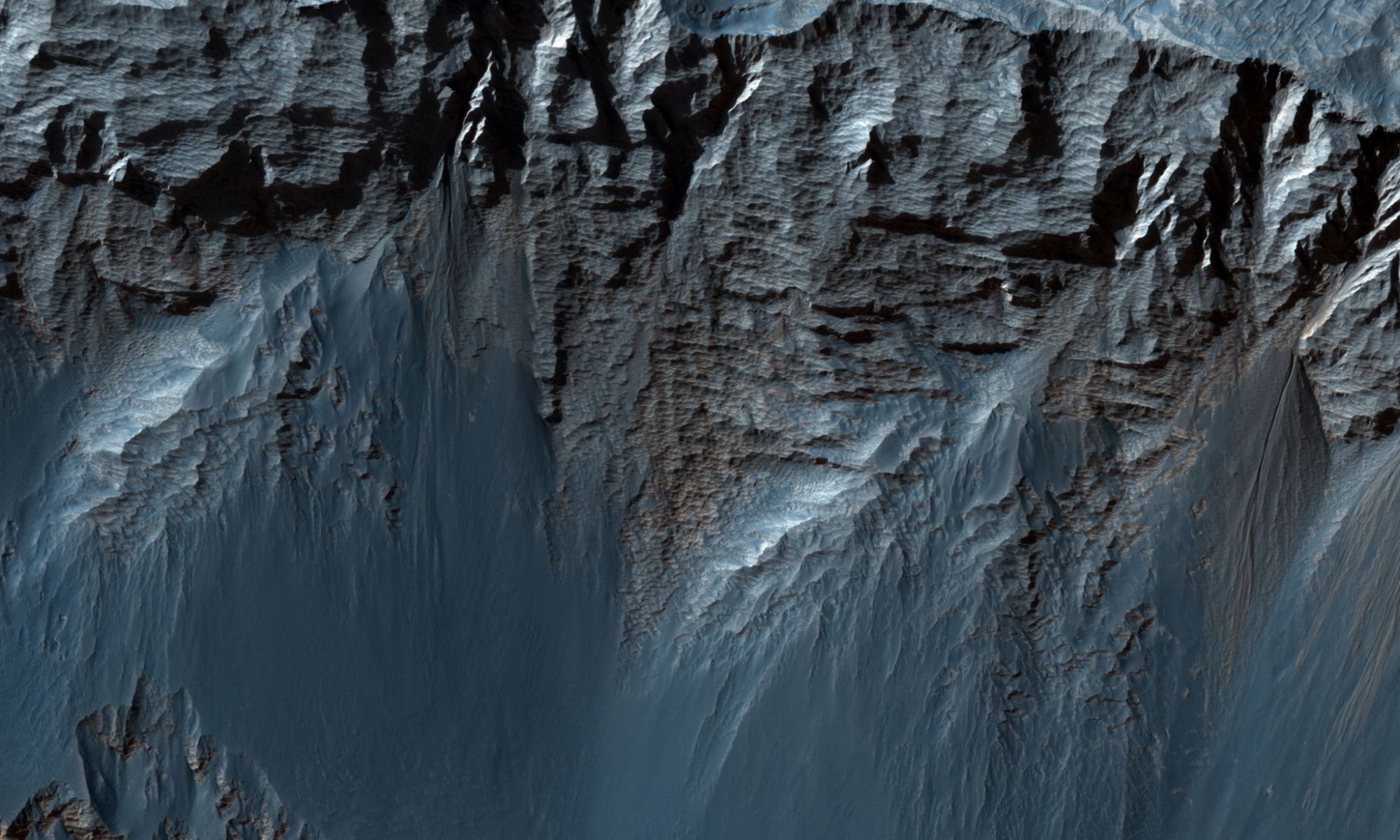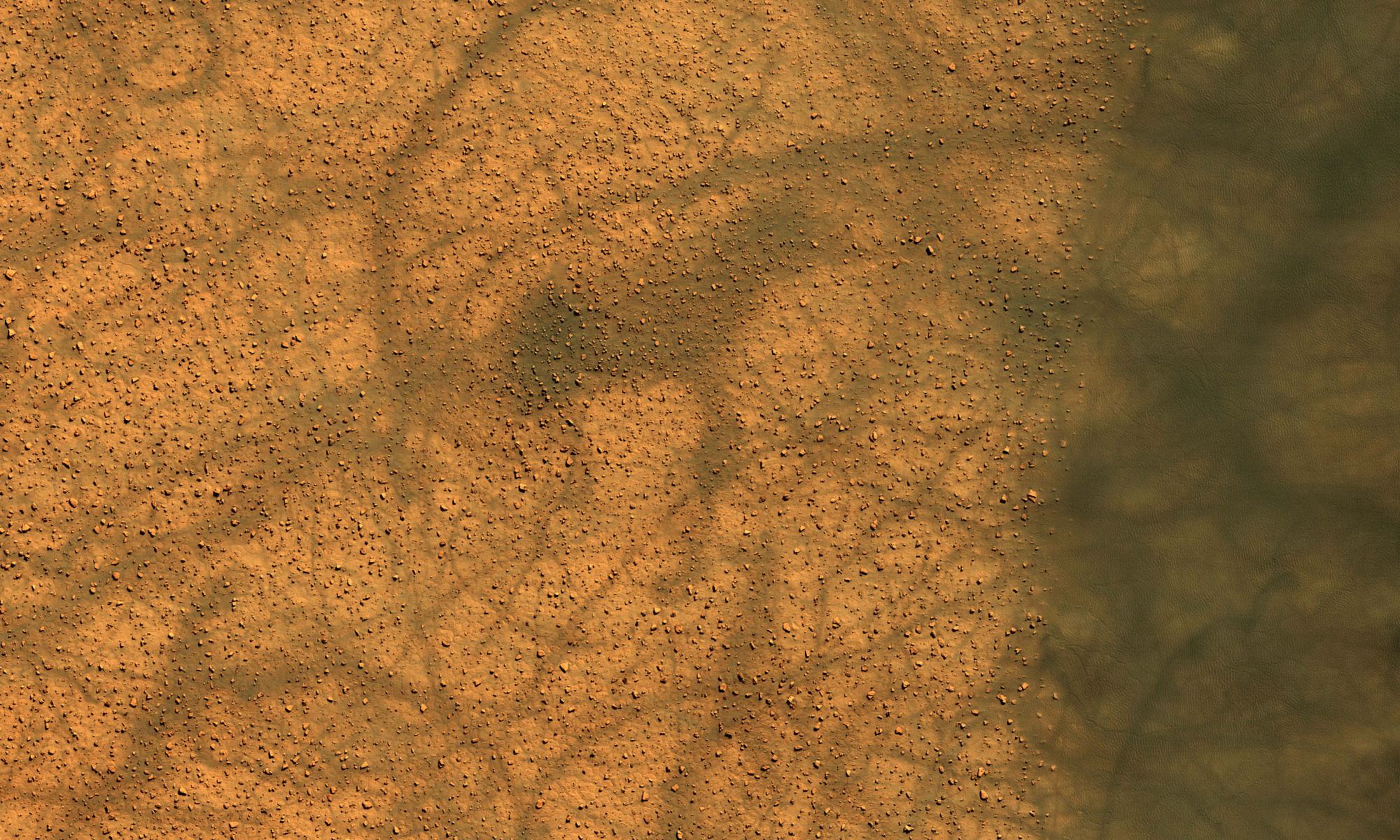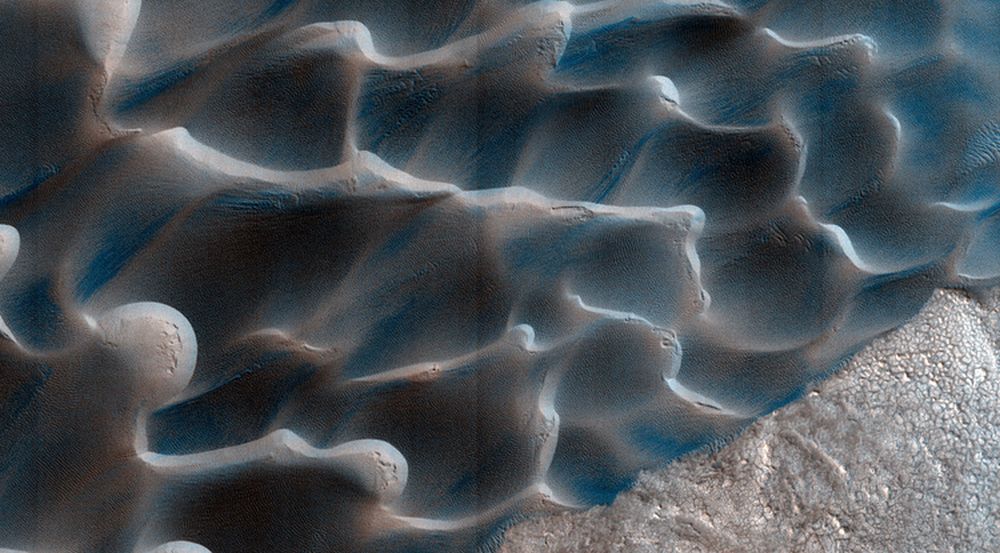In many ways, Mars is the planet that is most similar to the Earth. The red world has polar ice caps, a nearly 24-hour rotation period (about 24 hours and 37 minutes), mountains, plains, dust storms, volcanoes, a population of robots, many of which are old and no longer work, and even a Grand Canyon of sorts. The ‘Grand Canyon’ on Mars is actually far grander than any Arizonan gorge. Valles Marineris dwarfs the Grand Canyon of the southwestern US, spanning 4,000 km in length (the distance between LA and New York City), and dives 7 kilometers into the Martian crust (compared to a measly 2km of depth seen in the Grand Canyon). Newly released photos from the High-Resolution Imaging Science Experiment (HiRISE) aboard the Mars Reconnaissance Orbiter (MRO) reveal a stunning look at eroding cliff faces in Candor Chasma, a gigantic canyon that comprises a portion of the Valles Marineris system.
Continue reading “Layers Upon Layers of Rock in Candor Chasma on Mars”You Can See the Spot Where Lava Broke Through the Wall of a Martian Crater and Began Filling it Up
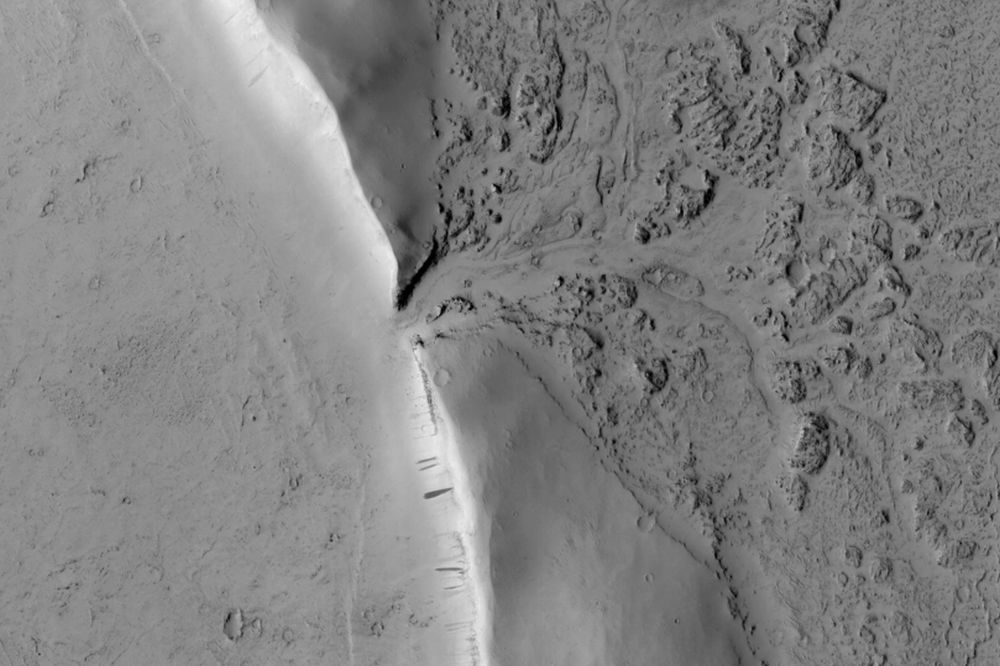
At a fundamental level, Mars is a volcanic planet. Its surface is home to the Solar System’s largest extinct volcano, Olympus Mons, and another trio of well-known volcanoes at Tharsis Montes. And those are just the highlights: there are many other volcanoes on the surface. Though that volcanic activity ceased long ago, the planet’s surface tells the tale of a world disrupted and shaped by powerful volcanic eruptions.
Continue reading “You Can See the Spot Where Lava Broke Through the Wall of a Martian Crater and Began Filling it Up”Summer is Dust Devil Time on Mars
Just like Earth, Mars undergoes seasonal changes due to its axial tilt. And while summer heat on Mars can’t compare with Earth’s, along with the Martian summer warmth comes an increase in small whirling storms known as dust devils.
Continue reading “Summer is Dust Devil Time on Mars”The Colorful Walls of an Exposed Impact Crater on Mars
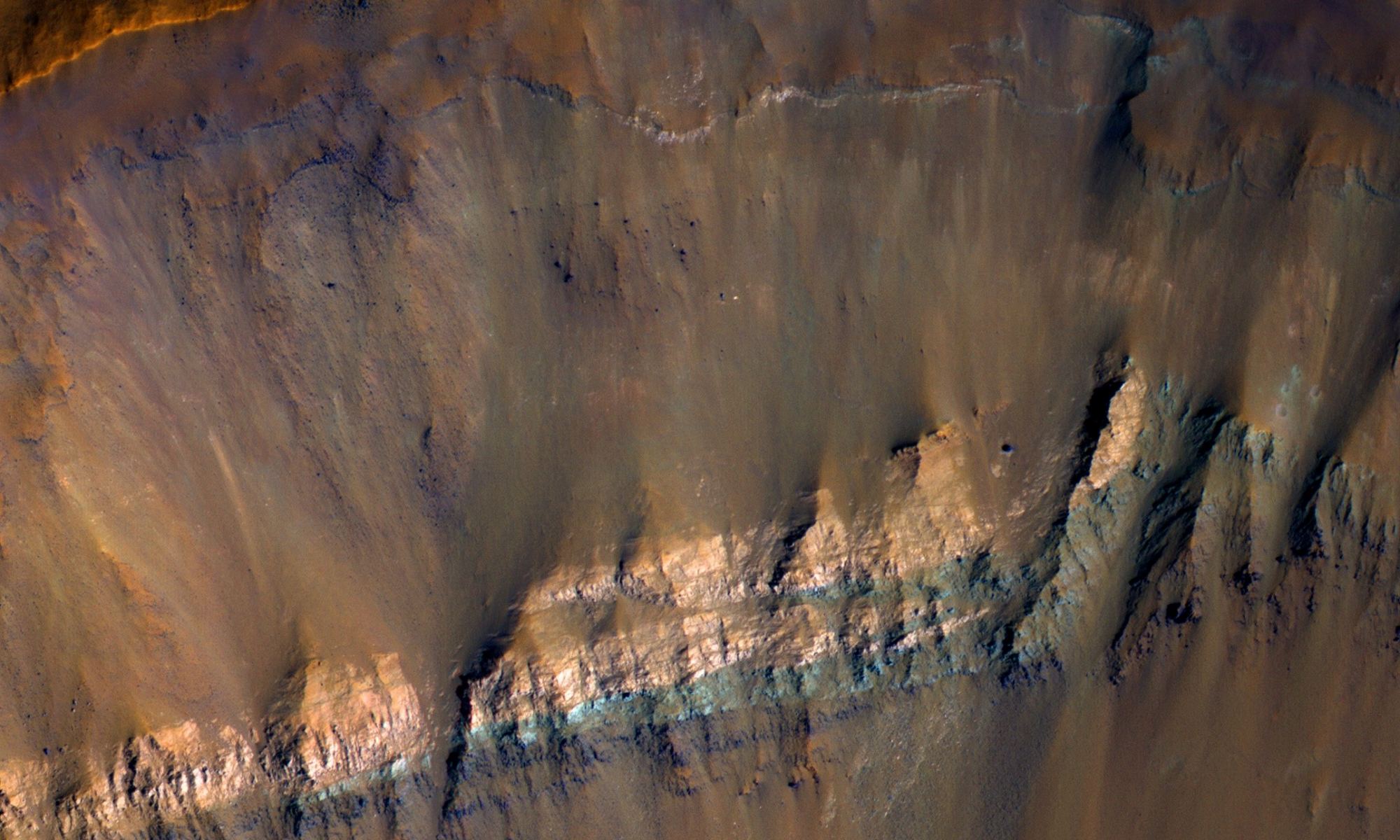
Impact craters have been called the “poor geologists’ drill,” since they allow scientists to look beneath to the subsurface of a planet without actually digging down. It’s estimated that Mars has over 600,000 craters, so there’s plenty of opportunity to peer into the Red Planet’s strata – especially with the incredible HiRISE (High Resolution Imaging Science Experiment) camera on board the Mars Reconnaissance Orbiter which has been orbiting and studying Mars from above since 2006.
Continue reading “The Colorful Walls of an Exposed Impact Crater on Mars”Look down into a pit on Mars. The caved-in roof of a lava tube could be a good place to explore on the Red Planet
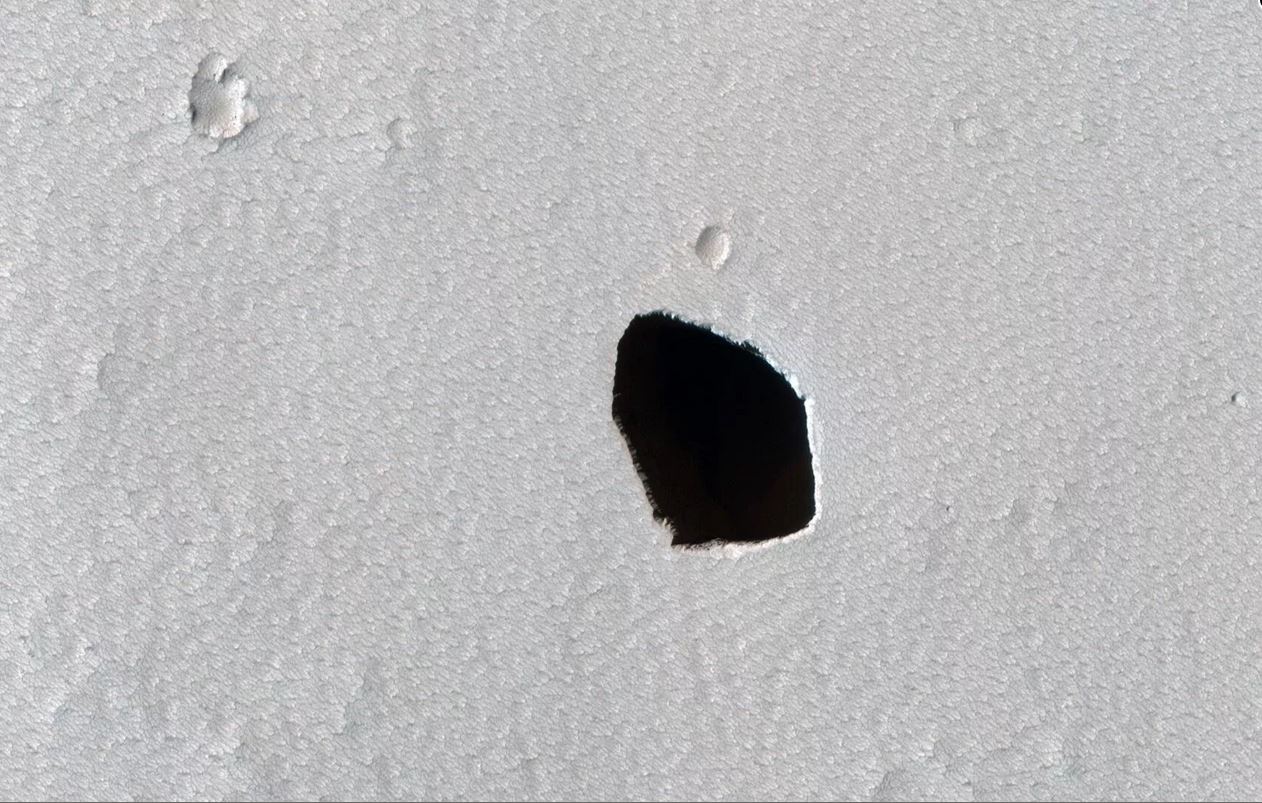
Want to look inside a deep, dark pit on Mars? Scientists and engineers using the HiRISE Camera on board NASA’s Mars Reconnaissance Orbiter have done just that.
From its orbit about 260 km (160 miles) above the surface, HiRISE can spot something as small as a dinner table, about a meter in size. But can it look inside a cave-like feature on the Red Planet and actually resolve any details inside this pit?
Continue reading “Look down into a pit on Mars. The caved-in roof of a lava tube could be a good place to explore on the Red Planet”This is Probably Sandstone Layers on Mars. Absolutely Beautiful
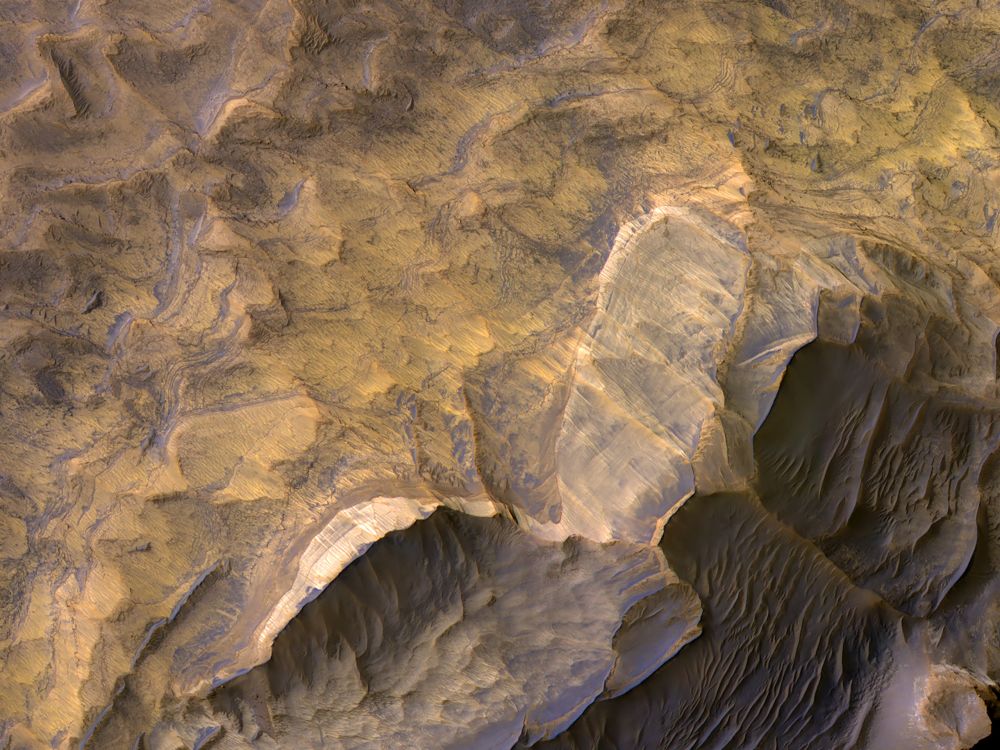
NASA’s Mars Reconnaissance Orbiter (MRO) has been in orbit around Mars for almost 14 years. It carries a variety of instruments with it, including the Compact Reconnaissance Imaging Spectrometer for Mars (CRISM) instrument. That instrument has collected thousands of images of Mars.
Continue reading “This is Probably Sandstone Layers on Mars. Absolutely Beautiful”It Hasn’t Rained on Mars for a Long Time, but These Sand Dunes Look Like Raindrops, and They’re Filled with Chemicals Made in Water
Mars is well-known for being a dry and arid place, where dusty red sand dunes are prevalent and water exists almost entirely in the form of ice and permafrost. An upside to this, however, is the fact that these conditions are the reason why Mars’ many surface features are so well preserved. And as missions like the Mars Reconnaissance Orbiter (MRO) have shown, this allows for some pretty interesting finds.
Consider the picture recently taken by Curiosity’s
Different Conditions From Earth Drive the Movement of Sand Dunes on Mars
Mars is a sandy planet and the HiRISE camera on the Mars Reconnaissance Orbiter (MRO) has given us tons of beautiful pictures of Martian sand dunes. But Mars’ dunes are much different than dunes here on Earth. Their movement is governed by different factors than Earth dunes.
Continue reading “Different Conditions From Earth Drive the Movement of Sand Dunes on Mars”A Meteoroid Smashed Into the Side of a Crater on Mars and Then Started a Landslide
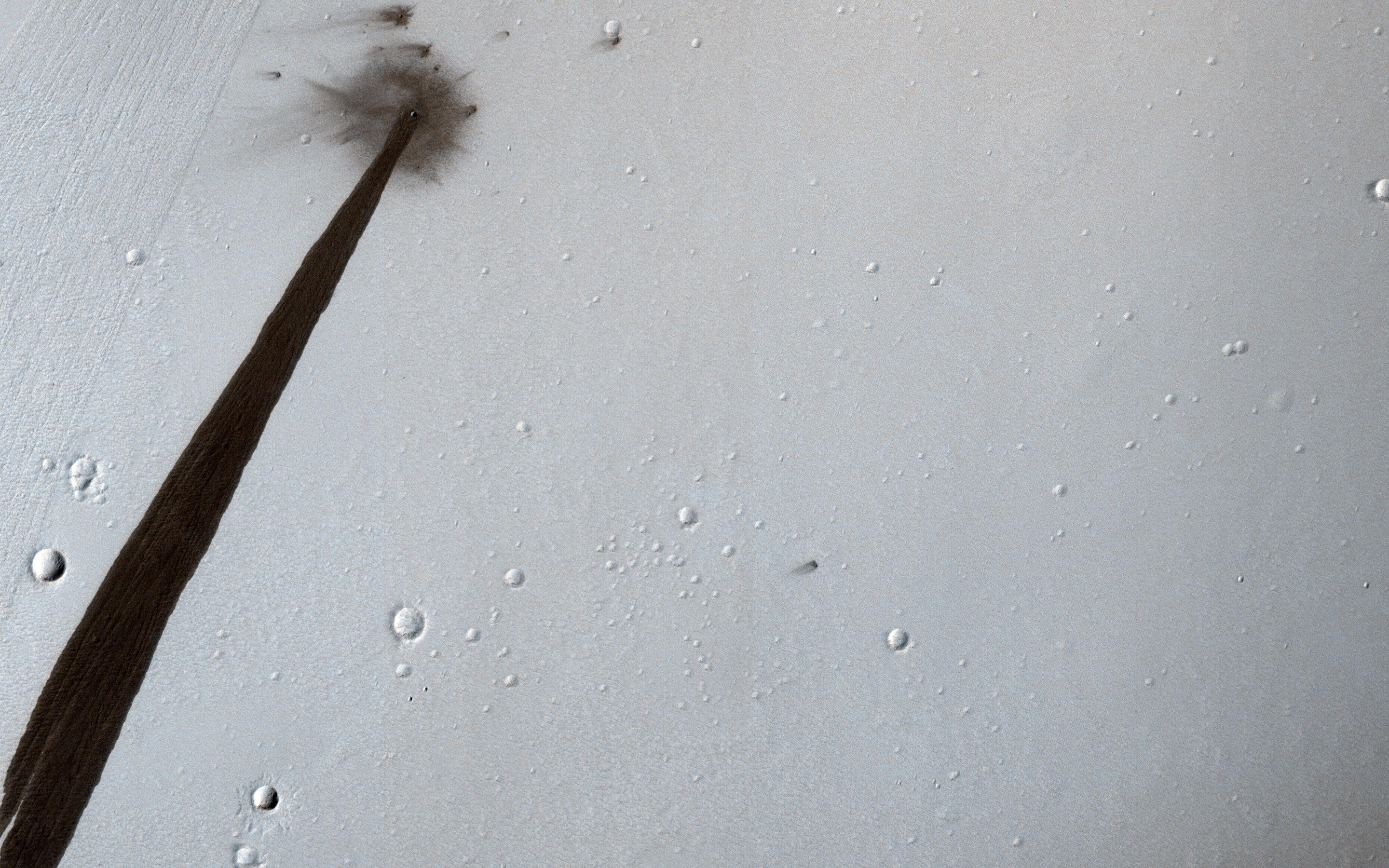
In 2006, NASA’s Mars Reconnaissance Orbiter (MRO) established orbit around the Red Planet. Using an advanced suite of scientific instruments – which include cameras, spectrometers, and radar – this spacecraft has been analyzing landforms, geology, minerals and ice on Mars for years and assisting with other missions. While the mission was only meant to last two years, the orbiter has remained in operation for the past twelve.
In that time, the MRO has acted as a relay for other missions to send information back to Earth and provided a wealth of information of its own on the Red Planet. Most recently, it captured an image of an impact crater that caused a landslide, which left a long, dark streak along the crater wall. Such streaks are created when dry dust collapses down the edge of a Martian hill, leaving behind dark swaths.
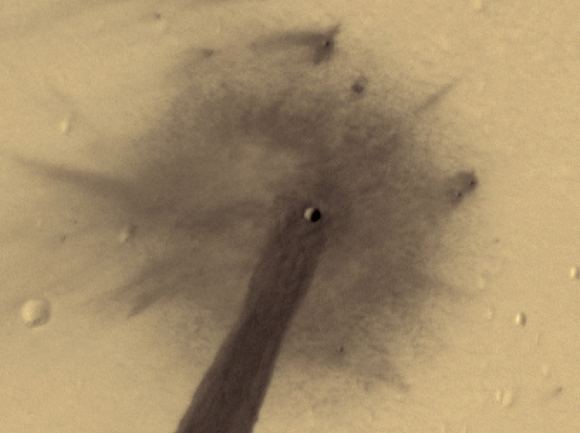
In this respect, these avalanches are not unlike Recurring Slope Lineae (RSL), where seasonal dark streaks appear along slopes during warmer days on Mars. These are believed to be caused by either salt water flows or dry dust grains falling naturally. In this case, however, the dry dust on the slope was destabilized by the meteor’s impact, which exposed darker material beneath.
The impact that created the crater is believed to have happened about ten years ago. And while the crater itself (shown above) is only 5 meters (16.4 feet) across, the streak it resulted in is 1 kilometer (0.62 mi) long! The image also captured the faded scar of an old avalanche, which is visible to the side of the new dark streak.
The image was captured by the MRO’s High Resolution Imaging Science Experiment (HiRISE), which is operated by researchers at the Planetary Image Research Laboratory (PIRL), part of the Lunar and Planetary Laboratory (LPL) at the University of Arizona, Tucson.
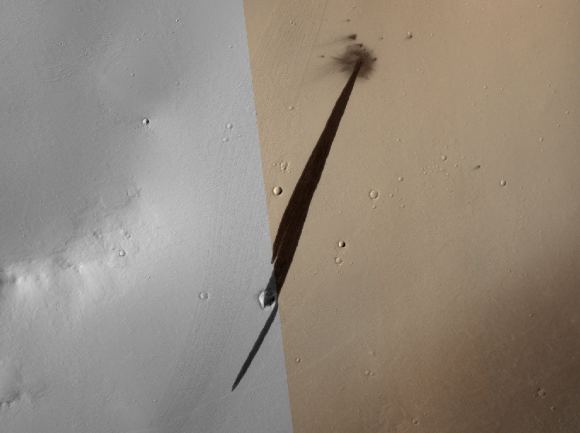
This is just the latest in a long-line of images and data packages sent back by the MRO. By providing daily reports on Mars’ weather and surface conditions, and studying potential landing sites, the MRO also paves the way for future spacecraft and surface missions. In the future, the orbiter will serve as a highly capable relay satellite for missions like NASA’s Mars 2020 rover, which will continue in the hunt for signs of past life on Mars.
At present, the MRO has enough propellant to keep functioning into the 2030s, and given its intrinsic value to the study of Mars, it is likely to remain in operation right up until it exhausts its fuel. Perhaps it will even be working when astronauts arrived on the Red Planet?
Did the Milky Way Steal These Stars or Kick Them Out of the Galaxy?
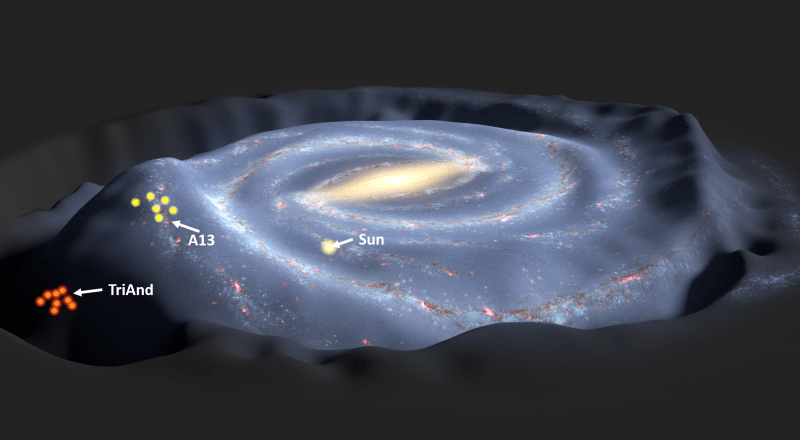
Despite thousands of years of research and observation, there is much that astronomers still don’t know about the Milky Way Galaxy. At present, astronomers estimate that it spans 100,000 to 180,000 light-years and consists of 100 to 400 billion stars. In addition, for decades, there have been unresolved questions about how the structure of our galaxy evolved over the course of billions of years.
For example, astronomers have long suspected that galactic halo came from – giant structures of stars that orbit above and below the flat disk of the Milky Way – were formed from debris left behind by smaller galaxies that merged with the Milky Way. But according to a new study by an international team of astronomers, it appears that these stars may have originated within the Milky Way but were then kicked out.
The study recently appeared in the journal Nature under the title “Two chemically similar stellar overdensities on opposite sides of the plane of the Galactic disk“. The study was led by Margia Bergmann, a researcher from the Max Planck Institute for Astronomy, and included members from the Australian National University, the California Institute of Technology, and multiple universities.
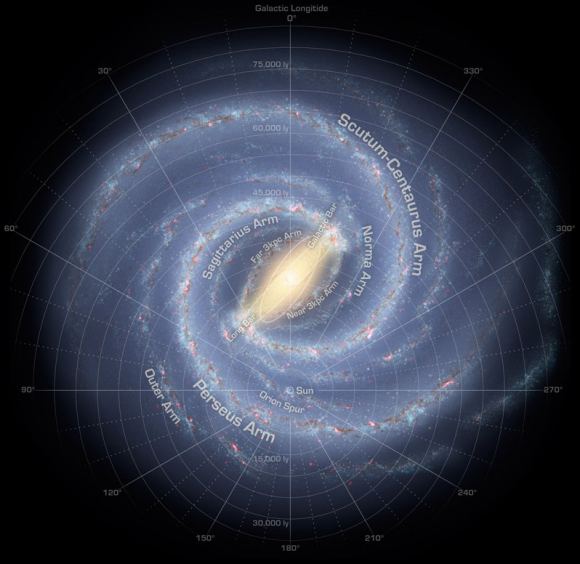
For the sake of their study, the team relied on data from the W.M. Keck Observatory to determine the chemical abundance patterns from 14 stars located in the galactic halo. These stars were located in two different halo structures – the Triangulum-Andromeda (Tri-And) and the A13 stellar overdensities – which are bout 14,000 light years above and below the Milky Way disc.
As Bergemann explained in a Keck Observatory press release:
“The analysis of chemical abundances is a very powerful test, which allows, in a way similar to the DNA matching, to identify the parent population of the star. Different parent populations, such as the Milky Way disk or halo, dwarf satellite galaxies or globular clusters, are known to have radically different chemical compositions. So once we know what the stars are made of, we can immediately link them to their parent populations.”
The team also obtained spectra from one additional using the European Southern Observatory’s Very Large Telescope (VLT) in Chile. By comparing the chemical compositions of these stars with the ones found in other cosmic structures, the scientists noticed that the chemical compositions were almost identical. Not only were they similar within and between the groups being studies, they closely matched the abundance patterns of stars found within the Milky Way’s outer disk.
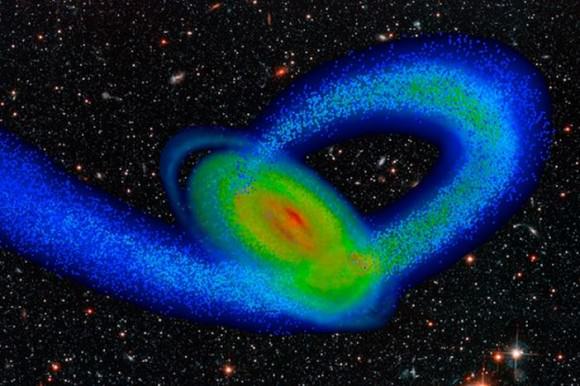
From this, they concluded that these stellar population in the Galactic Halo were formed in the Milky Way, but then relocated to locations above and below the Galactic Disk. This phenomena is known as “galactic eviction”, where structures are pushed off the plane of the Milky Way when a massive dwarf galaxy passes through the galactic disk. This process causes oscillations that eject stars from the disk, in whichever the dwarf galaxy is moving.
“The oscillations can be compared to sound waves in a musical instrument,” added Bergemann. “We call this ‘ringing’ in the Milky Way galaxy ‘galactoseismology,’ which has been predicted theoretically decades ago. We now have the clearest evidence for these oscillations in our galaxy’s disk obtained so far!”
These observations were made possible thanks to the High-Resolution Echelle Spectrometer (HiRES) on the Keck Telescope. As Judy Cohen, the Kate Van Nuys Page Professor of Astronomy at Caltech and a co-author on the study, explained:
“The high throughput and high spectral resolution of HIRES were crucial to the success of the observations of the stars in the outer part of the Milky Way. Another key factor was the smooth operation of Keck Observatory; good pointing and smooth operation allows one to get spectra of more stars in only a few nights of observation. The spectra in this study were obtained in only one night of Keck time, which shows how valuable even a single night can be.”
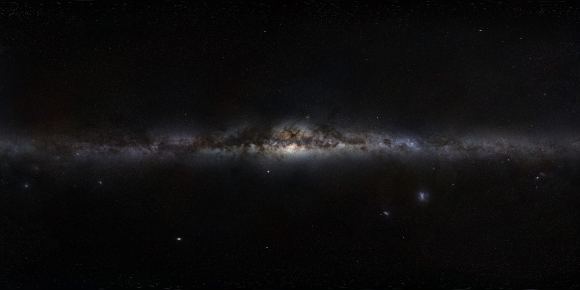
These findings are very exciting for two reasons. On the one hand, it demonstrates that halo stars likely originated in the Galactic think disk – a younger part of the Milky Way. On the other hand, it demonstrates that the Milky Way’s disk and its dynamics are much more complex than previously thought. As Allyson Sheffield of LaGuardia Community College/CUNY, and a co-author on the paper, said:
“We showed that it may be fairly common for groups of stars in the disk to be relocated to more distant realms within the Milky Way – having been ‘kicked out’ by an invading satellite galaxy. Similar chemical patterns may also be found in other galaxies, indicating a potential galactic universality of this dynamic process.”
As a next step, the astronomers plan to analyze the spectra of additional stars in the Tri-And and A13 overdensities, as well as stars in other stellar structures further away from the disk. They also plan to determine masses and ages of these stars so they can constrain the time limits of when this galactic eviction took place.
In the end, it appears that another long-held assumption on galactic evolution has been updated. Combined with ongoing efforts to probe the nuclei of galaxies – to see how their Supermassive Black Holes and star formation are related – we appear to be getting closer to understanding just how our Universe evolved over time.
Further Reading: W.M. Keck Observatory, Nature

